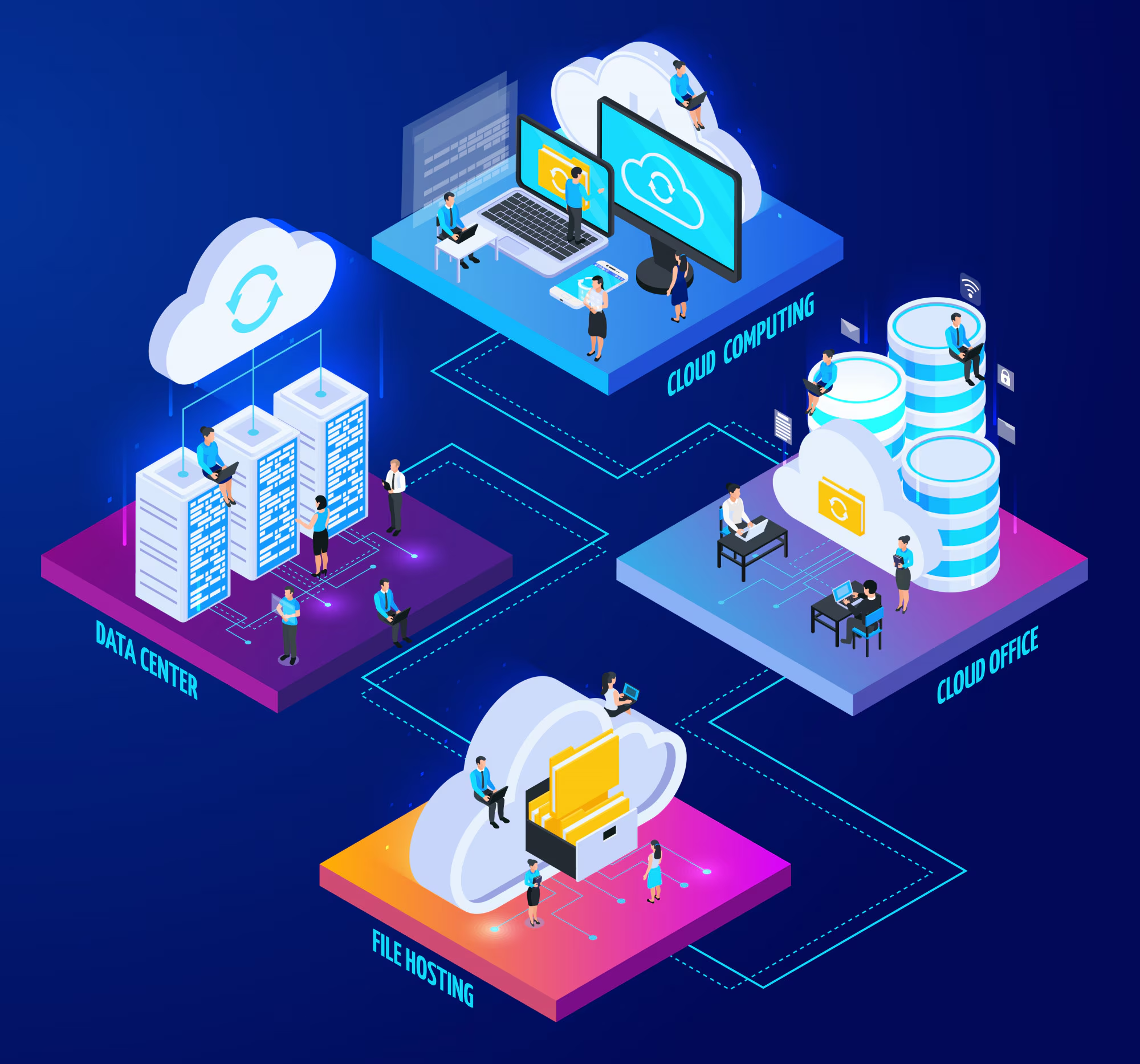Choosing the Right Technology Stack: A Decision Framework for CTOs
A comprehensive framework for technology stack decisions. Learn how to evaluate options, avoid common pitfalls, and choose technologies that scale with your business.

Choosing the Right Technology Stack: A Decision Framework for CTOs
Technology stack decisions are among the most critical choices a CTO makes, with consequences that can last for years. Having guided dozens of companies through these decisions as a cloud architecture consultant India, I've developed a systematic framework that balances immediate needs with long-term strategic goals. This approach to choosing the right technology stack for startups has helped companies avoid costly migrations and scale effectively.
The High Cost of Wrong Technology Decisions
Poor technology choices can cripple a company's growth. I've seen startups spend months rewriting systems, enterprises struggle with legacy technologies, and teams paralyzed by overly complex stacks. The cost of getting it wrong includes:
- Technical Debt: Accumulates faster with inappropriate technology choices
- Talent Acquisition: Obscure technologies limit hiring options
- Scaling Issues: Some technologies hit hard limits
- Maintenance Overhead: Complex stacks require specialized knowledge
- Migration Costs: Switching technologies later is exponentially expensive
The Decision Framework: SCALE Method
I use the SCALE framework when providing enterprise application development guidance to evaluate technology choices:
- Scalability requirements
- Complexity and learning curve
- Availability of talent
- Long-term viability
- Ecosystem and community support
Scalability Requirements
Understanding your scaling needs is crucial for how to design scalable software systems:
Questions to Ask:
- What's your expected user growth over 2-3 years?
- What are your performance requirements (latency, throughput)?
- Do you need to scale globally or regionally?
- What's your data growth pattern?
Technology Evaluation Example:
// Scaling comparison for Indian e-commerce
// Node.js - Good for I/O intensive applications
const express = require('express');
const app = express();
// Handles 10k+ concurrent connections well
// Good for: Real-time features, APIs, microservices
// Limitation: CPU-intensive tasks
// Java Spring Boot - Good for enterprise applications
@RestController
public class ProductController {
// Excellent for: Complex business logic, enterprise integration
// Good scaling: With proper configuration
// Limitation: Higher memory usage
}
// Python Django - Good for rapid development
# Excellent for: Data processing, ML integration
# Good for: Quick prototypes, admin interfaces
# Limitation: GIL limits CPU parallelism
Complexity and Learning Curve
Technology complexity affects development velocity and team productivity:
Complexity Assessment Matrix:
| Technology | Learning Curve | Operational Complexity | Best For |
|---|---|---|---|
| React + Node.js | Medium | Low | Rapid prototyping |
| Java Spring | High | Medium | Enterprise applications |
| Python Django | Low | Low | Quick development |
| Go | Medium | Low | High-performance services |
Availability of Talent
In the Indian market, talent availability varies significantly by technology:
Indian Developer Market Analysis (2025):
- High Availability: Java, Python, JavaScript, React
- Medium Availability: Go, Kotlin, Vue.js
- Low Availability: Rust, Elixir, Clojure
- Specialized: Scala, F#, Haskell
Hiring Strategy by Technology:
// Technology choice impact on hiring
// High availability - easy to hire and scale
const javaTeam = {
availability: 'High',
timeToHire: '2-4 weeks',
salaryRange: 'Moderate',
trainingCost: 'Low'
};
// Specialized technology - harder to scale
const rustTeam = {
availability: 'Low',
timeToHire: '8-12 weeks',
salaryRange: 'High',
trainingCost: 'High'
};
Technology Categories and Selection Criteria
Frontend Technologies
Modern frontend development requires balancing user experience with development productivity:
React - The Safe Choice
// React advantages for Indian companies
// Large talent pool
// Extensive ecosystem
// Strong community support
// Good performance with proper optimization
function UserDashboard({ user, orders }) {
return (
<div className="dashboard">
<UserProfile user={user} />
<OrderHistory orders={orders} />
</div>
);
}
// Considerations:
// - Bundle size can be large
// - Requires build tooling
// - SEO requires additional setup (Next.js)
Vue.js - The Pragmatic Choice
<!-- Vue.js advantages -->
<!-- Gentle learning curve -->
<!-- Excellent documentation -->
<!-- Good performance out of the box -->
<template>
<div class="dashboard">
<user-profile :user="user" />
<order-history :orders="orders" />
</div>
</template>
<script>
export default {
props: ['user', 'orders'],
// Simple, intuitive API
}
</script>
Backend Technologies
Backend technology choice affects scalability, maintainability, and team productivity:
Node.js - JavaScript Everywhere
// Node.js strengths for startups
const express = require('express');
const app = express();
// Advantages:
// - Same language as frontend
// - Excellent for I/O intensive apps
// - Large npm ecosystem
// - Good for microservices
app.get('/api/users/:id', async (req, res) => {
const user = await User.findById(req.params.id);
res.json(user);
});
// Best for:
// - APIs and microservices
// - Real-time applications
// - Startups with JavaScript expertise
Java Spring Boot - Enterprise Grade
// Java advantages for enterprise applications
@RestController
@RequestMapping("/api/users")
public class UserController {
@Autowired
private UserService userService;
@GetMapping("/{id}")
public ResponseEntity<User> getUser(@PathVariable Long id) {
User user = userService.findById(id);
return ResponseEntity.ok(user);
}
}
// Advantages:
// - Excellent tooling and IDE support
// - Strong type safety
// - Mature ecosystem
// - Good for complex business logic
// - Excellent testing frameworks
Python Django - Rapid Development
# Python advantages for data-heavy applications
from django.http import JsonResponse
from django.views import View
from .models import User
class UserView(View):
def get(self, request, user_id):
user = User.objects.get(id=user_id)
return JsonResponse(user.to_dict())
# Advantages:
# - Rapid development
# - Excellent for ML/AI integration
# - Rich ecosystem for data processing
# - Good for content-heavy applications
Database Selection Strategy
Database choice affects performance, scalability, and development complexity:
Relational Databases (PostgreSQL/MySQL)
-- PostgreSQL advantages
-- ACID compliance
-- Rich data types (JSON, arrays)
-- Excellent query optimizer
-- Strong consistency
CREATE TABLE users (
id SERIAL PRIMARY KEY,
email VARCHAR(255) UNIQUE NOT NULL,
profile JSONB,
created_at TIMESTAMP DEFAULT NOW()
);
-- Good for:
-- Traditional business applications
-- Complex relationships
-- Strong consistency requirements
-- Financial applications
NoSQL Databases
// MongoDB advantages
// Flexible schema
// Horizontal scaling
// Good for rapid prototyping
db.users.insertOne({
email: "user@example.com",
profile: {
name: "John Doe",
preferences: {
language: "en",
timezone: "Asia/Kolkata"
}
},
createdAt: new Date()
});
// Good for:
// Content management
// Real-time analytics
// Rapid prototyping
// Document-heavy applications
Cloud Platform Selection
Cloud choice affects costs, scalability, and operational complexity:
AWS - The Comprehensive Choice
- Advantages: Comprehensive services, mature ecosystem, strong documentation
- Disadvantages: Complex pricing, steep learning curve
- Best For: Large enterprises, complex infrastructure needs
Google Cloud - The AI/ML Choice
- Advantages: Excellent ML services, competitive pricing, strong Kubernetes support
- Disadvantages: Smaller ecosystem, fewer services than AWS
- Best For: Data-heavy applications, ML/AI projects
Azure - The Enterprise Choice
- Advantages: Strong Microsoft integration, good hybrid cloud support
- Disadvantages: Complex for non-Microsoft stacks
- Best For: Microsoft-centric organizations
Decision Tree for Indian Startups
Early Stage (0-10 people):
// Recommended stack for rapid development
Frontend: React or Vue.js
Backend: Node.js or Python Django
Database: PostgreSQL
Cloud: Google Cloud or AWS (with managed services)
Deployment: Vercel/Netlify + Railway/Heroku
// Focus: Speed to market, learning, validation
Growth Stage (10-50 people):
// Recommended stack for scaling
Frontend: React with Next.js or Vue with Nuxt
Backend: Node.js with TypeScript or Java Spring Boot
Database: PostgreSQL + Redis for caching
Cloud: AWS or Google Cloud with containerization
Deployment: Docker + Kubernetes or managed container services
// Focus: Scalability, maintainability, team productivity
Scale Stage (50+ people):
// Recommended stack for enterprise scale
Frontend: Micro-frontends with React/Vue
Backend: Microservices with Java/Go/Node.js
Database: Multi-database strategy (CQRS pattern)
Cloud: Multi-cloud or hybrid with strong observability
Deployment: Kubernetes with GitOps
// Focus: Reliability, observability, team autonomy
Common Anti-Patterns to Avoid
1. Technology for Technology's Sake
Don't choose technologies just because they're new or trendy. Focus on solving business problems.
2. Over-Engineering Early
Avoid complex architectures until you have evidence you need them.
3. Ignoring Team Expertise
Consider your team's existing skills and learning capacity.
4. Vendor Lock-in Without Benefits
Understand the trade-offs of proprietary vs. open-source solutions.
Implementation Strategy
Proof of Concept Approach
- Build Small: Create a minimal version with your chosen stack
- Measure Performance: Test under realistic load conditions
- Evaluate Developer Experience: How productive is the team?
- Assess Operational Overhead: How complex is deployment and monitoring?
Migration Planning
If changing technologies, plan for gradual migration:
// Strangler Fig pattern for gradual migration
// Old system
app.get('/legacy/*', legacyHandler);
// New system
app.get('/api/v2/*', newSystemHandler);
// Gradual migration
app.get('/api/v1/users/*', (req, res, next) => {
if (isUserMigrated(req.params.id)) {
return newUserHandler(req, res, next);
}
return legacyUserHandler(req, res, next);
});
Conclusion
Choosing the right technology stack requires balancing multiple factors: business requirements, team capabilities, scalability needs, and long-term strategy. The SCALE framework provides a structured approach to making these critical decisions.
Remember that there's no perfect technology stack—only the right stack for your current situation and constraints. As your company grows and evolves, be prepared to evolve your technology choices as well.
The key is making informed decisions based on evidence and requirements, not hype or personal preferences. With the right framework and careful evaluation, you can choose technologies that will serve your company well for years to come.
